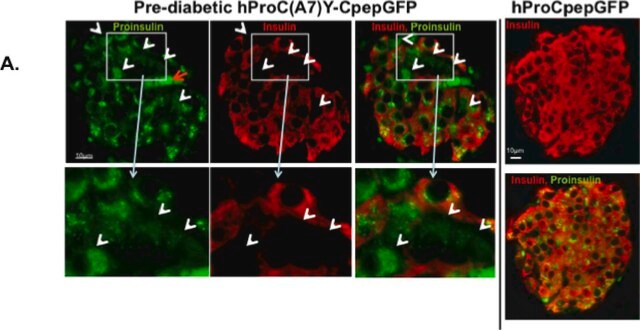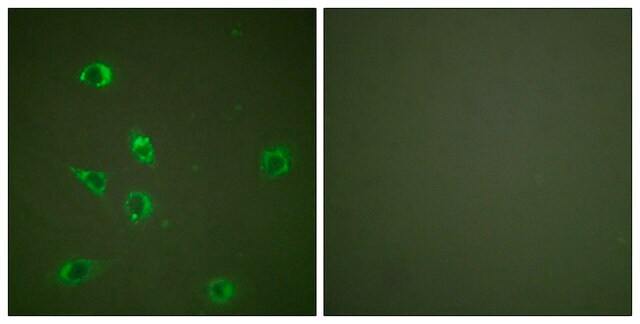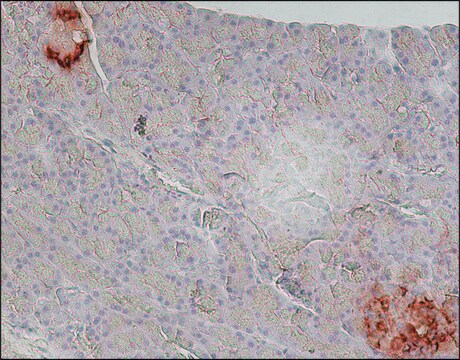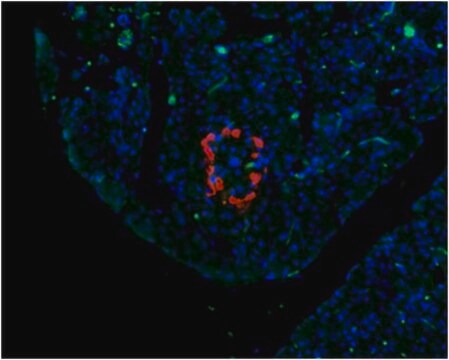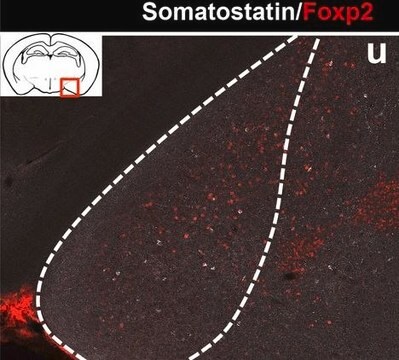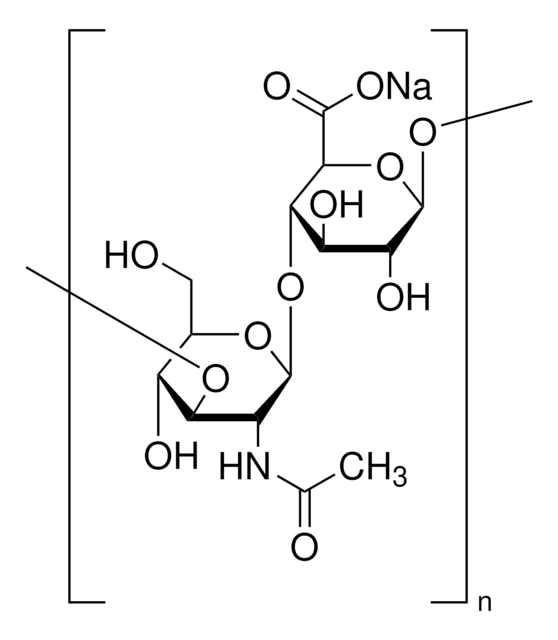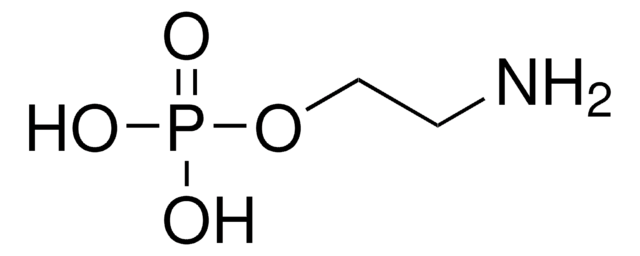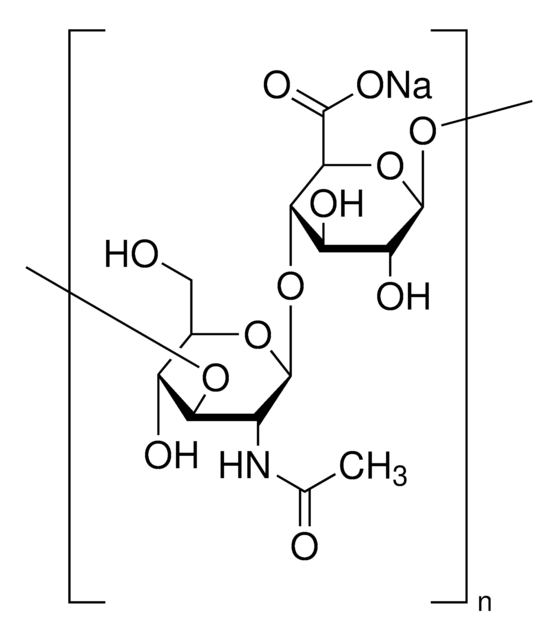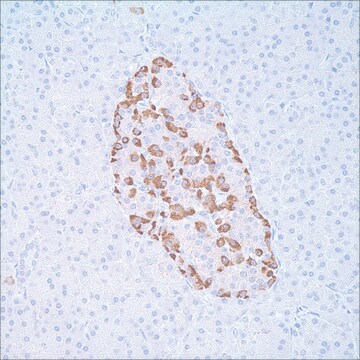G2654
Monoclonal Anti-Glucagon antibody produced in mouse
clone K79bB10, ascites fluid
Synonyme(s) :
Glucagon Antibody, Glucagon Antibody - Monoclonal Anti-Glucagon antibody produced in mouse
About This Item
Produits recommandés
Source biologique
mouse
Niveau de qualité
Conjugué
unconjugated
Forme d'anticorps
ascites fluid
Type de produit anticorps
primary antibodies
Clone
K79bB10, monoclonal
Contient
15 mM sodium azide
Espèces réactives
feline, canine, mouse, guinea pig, rat, rabbit, human, pig
Technique(s)
dot blot: suitable
immunohistochemistry (formalin-fixed, paraffin-embedded sections): 1:2,000 using human or animal pancreas
radioimmunoassay: suitable
Isotype
IgG1
Numéro d'accès UniProt
Conditions d'expédition
dry ice
Température de stockage
−20°C
Modification post-traductionnelle de la cible
unmodified
Informations sur le gène
human ... GCG(2641)
mouse ... Gcg(14526)
rat ... Gcg(24952)
Catégories apparentées
Description générale
Spécificité
Monoclonal anti-Glucagon antibody can be used as an analytical tool for quantification of the hormone. It can also be used for immunocytochemical staining of formalin fixed and Bouin-fixed, paraffin-embedded pancreatic tissue sections. Mouse anti-Glucagon antibody reacts specifically with pancreatic glucagon. The product has also shown cross reactivity with glucagon-containing cells in fixed sections of pancreas from dog, mouse, rat, rabbit, porcine, guinea pig, cat and human and weak cross reactivity for gut glucagon (enteroglucagon).
Immunogène
Application
- for the immunostaining of pancreatic tissue
- in flow cytometry and immunofluorescence imaging of pancreas cells
- for immunohistochemistry and morphology of pancreas
Actions biochimiques/physiologiques
Glucagon-specific antibodies would prove useful as an a cell and tumor markers applying immunohistochemical techniques, and as an analytical tool in quantification of the hormone.
Clause de non-responsabilité
Vous ne trouvez pas le bon produit ?
Essayez notre Outil de sélection de produits.
Code de la classe de stockage
12 - Non Combustible Liquids
Classe de danger pour l'eau (WGK)
nwg
Point d'éclair (°F)
Not applicable
Point d'éclair (°C)
Not applicable
Faites votre choix parmi les versions les plus récentes :
Déjà en possession de ce produit ?
Retrouvez la documentation relative aux produits que vous avez récemment achetés dans la Bibliothèque de documents.
Les clients ont également consulté
Notre équipe de scientifiques dispose d'une expérience dans tous les secteurs de la recherche, notamment en sciences de la vie, science des matériaux, synthèse chimique, chromatographie, analyse et dans de nombreux autres domaines..
Contacter notre Service technique